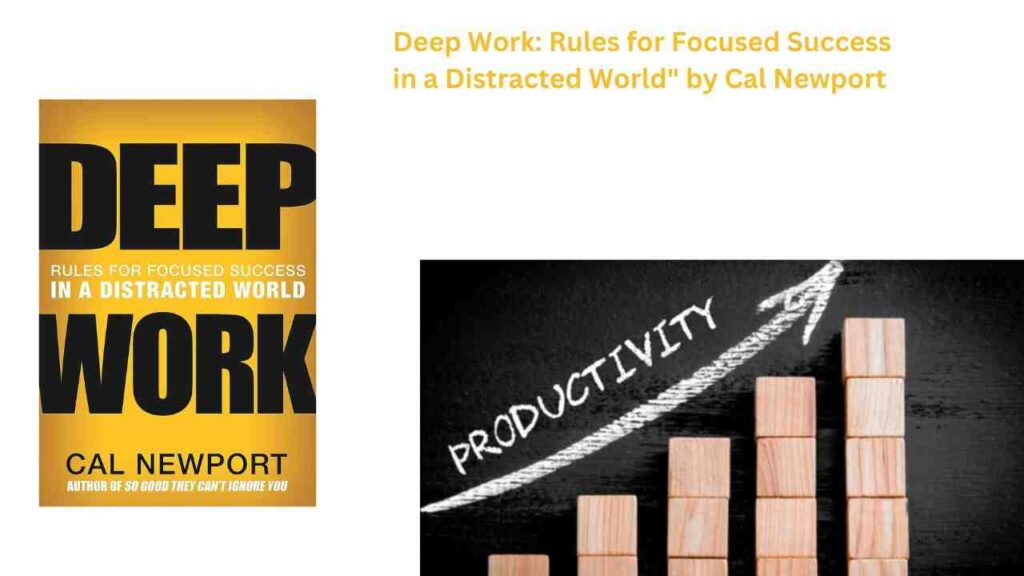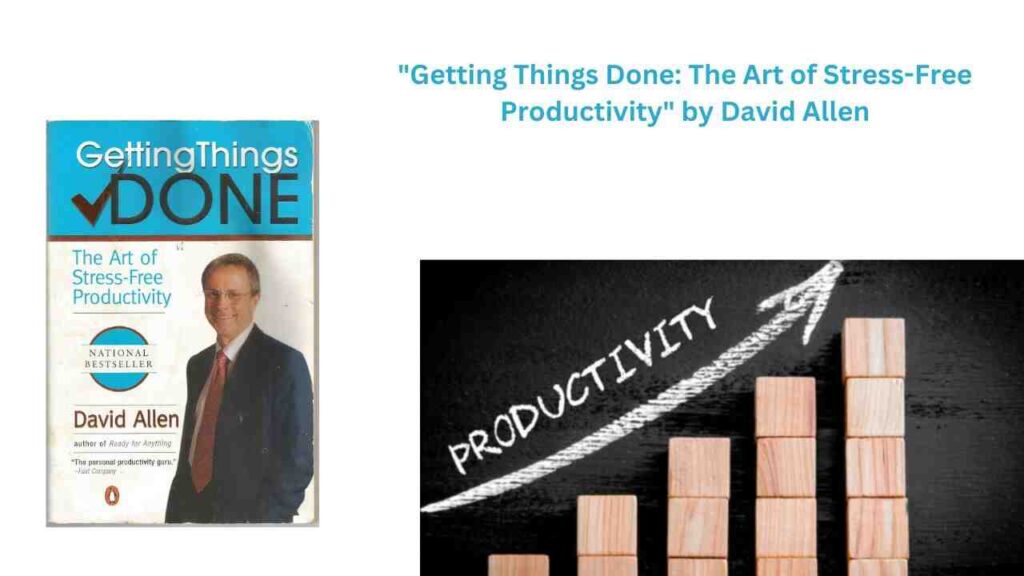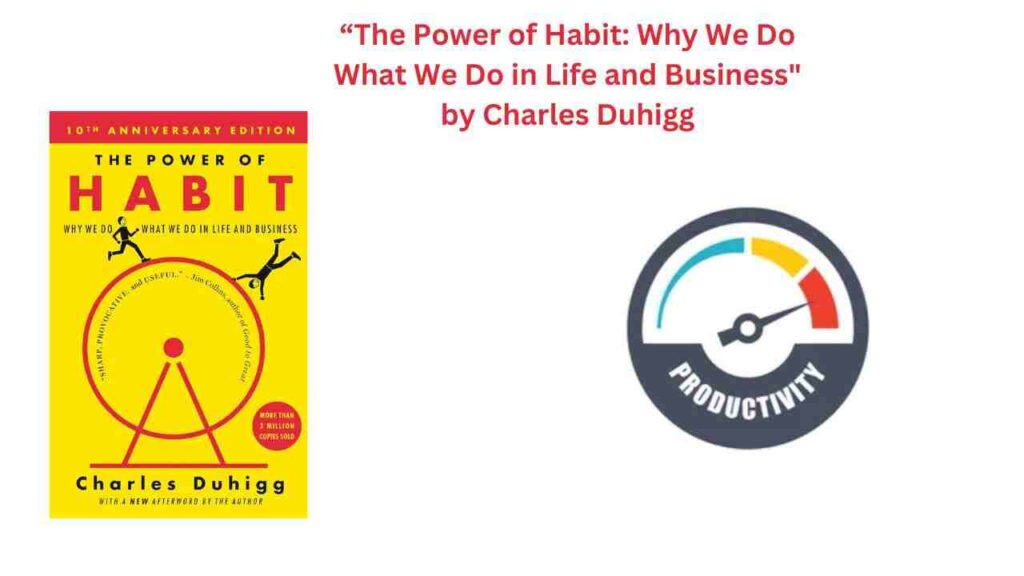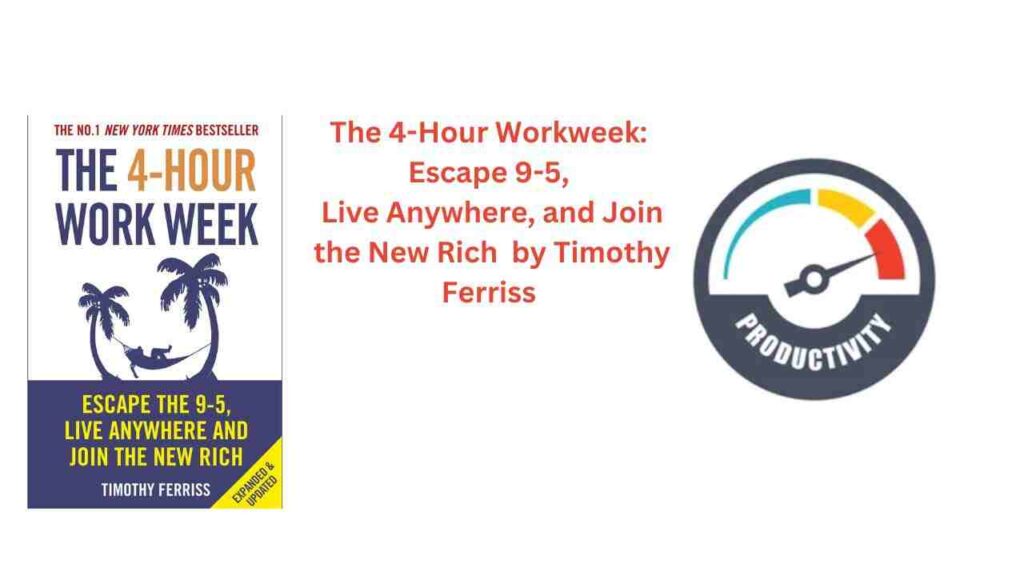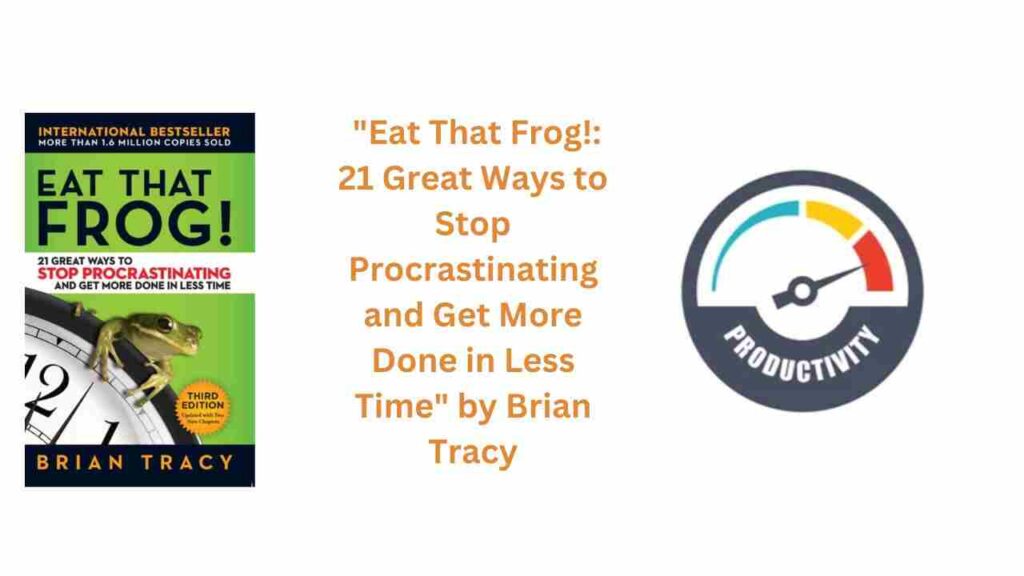best books on productivity|| best books to increase productivity
disclaimer: All products featured on this website are independently selected by us. However, when you buy something through our retail links, we may earn an affiliate commission.
https://youtu.be/yt_2v0xdoPQ?si=LpcxoUtEs2SRayX9
Increase your productivity now
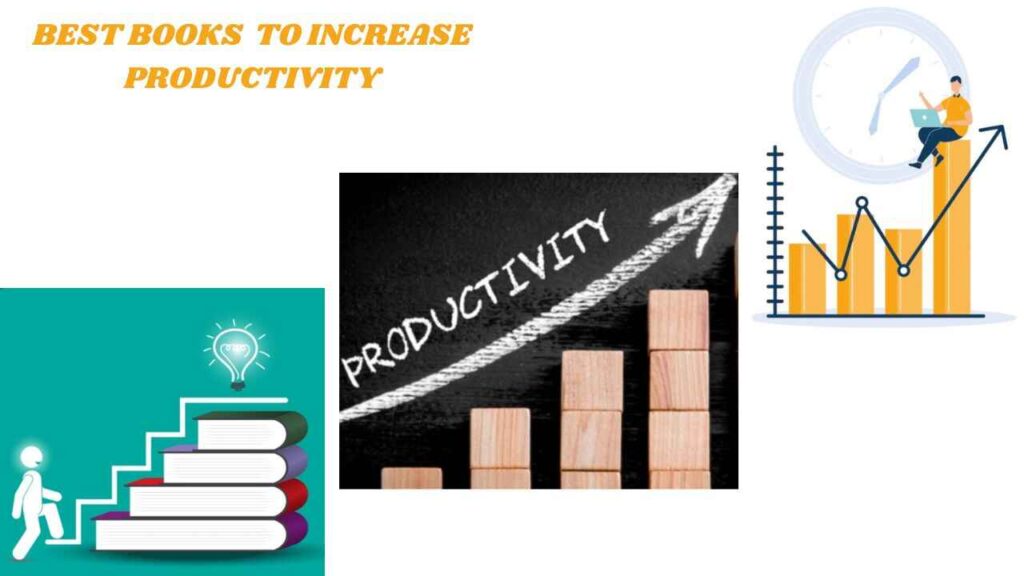
1.Smarter Faster Better: The Secrets of Being Productive in Life and Business by Charles Duhigg
READ NOW: Smarter Faster Better: The Secrets of Being Productive in Life and Business by Charles Duhigg:
SUMMARY OF THE BOOK Smarter Faster Better: The Secrets of Being Productive in Life and Business by Charles Duhigg:
In “Smarter Faster Better: The Secrets of Being Productive in Life and Business,” Charles Duhigg delves into the science of productivity, offering insightful strategies and actionable advice to help individuals and organizations enhance their efficiency and effectiveness. Through compelling stories, compelling anecdotes, and rigorous research, Duhigg uncovers the key principles and practices that drive increase productivity and success in both personal and professional realms. In this summary, we’ll explore the core concepts of the book and how they can be applied to increase productivity in various aspects of life and business.
Motivation: Understanding the Science Behind What Drives Us
Duhigg begins by examining the role of motivation in productivity, debunking common misconceptions and shedding light on the factors that truly motivate us. He introduces the concept of “internal locus of control,” which refers to the belief that we have the power to influence our outcomes, and explores how cultivating an internal locus of control can fuel our drive to succeed. By setting meaningful goals, fostering autonomy, and finding intrinsic rewards in our work, we can harness the power of motivation to increase productivity and achieve our objectives.
Focus: Mastering the Art of Attention Management
Duhigg explores the importance of focus in increase productivity and introduces the concept of “cognitive tunneling” – the tendency to fixate on one task to the exclusion of all others. He offers strategies for overcoming cognitive tunneling, such as implementing mental models, embracing productive procrastination, and practicing mindfulness. By learning our ability to manage attention and resist distractions, we can boost our focus and increase productivity in both work and life.
Goal Setting: Setting Clear Goals to Drive Success
Duhigg emphasizes the critical role of goal setting in driving increase productivity and success. He introduces the concept of “SMART” goals – Specific, Measurable, Achievable, Relevant, and Time-bound – and explains how adhering to these criteria can enhance goal clarity and motivation. Duhigg also explores the power of stretch goals – ambitious objectives that push us beyond our comfort zones – and how they can inspire innovation and breakthrough performance. By setting clear, challenging goals and breaking them down into manageable steps, we can increase productivity and propel ourselves toward success.
Decision Making: Making Better Choices to Maximize Results
In this section, Duhigg delves into the science of decision making and offers insights into how we can make better choices to increase productivity. He introduces the concept of “mental models” – frameworks for understanding the world – and explains how adopting diverse mental models can enhance our decision-making process. Duhigg also explores the role of probabilistic thinking, feedback loops, and structured decision-making frameworks in improving decision quality and reducing cognitive biases. By employing these strategies, we can make more informed, effective decisions and optimize our productivity.
Innovation: Cultivating Creativity and Innovation
Duhigg explores the importance of innovation in driving productivity and growth, highlighting the role of creativity in problem-solving and idea generation. He introduces the concept of “psychological safety” – the belief that one can take risks and express oneself without fear of judgment or reprisal – and explains how fostering psychological safety can fuel innovation and collaboration within teams. Duhigg also explores the value of diverse perspectives, experimentation, and embracing failure as a catalyst for learning and growth. By creating a culture that values creativity and encourages experimentation, organizations can drive innovation and increase productivity.
Absorbing Data: Leveraging Data to Drive Performance
Lastly, Duhigg examines the importance of data in driving productivity and performance. He introduces the concept of “disfluency” – the idea that making information more difficult to process can enhance comprehension and retention – and explores how adopting a curious mindset and seeking out diverse sources of information can deepen our understanding and drive innovation. Duhigg also discusses the value of data visualization, storytelling, and experimentation in making data more accessible and actionable. By leveraging data effectively, individuals and organizations can gain valuable insights, make informed decisions, and increase productivity.
In conclusion, “Smarter Faster Better” offers a wealth of insights and practical strategies for increasing productivity in both personal and professional contexts. By understanding the science behind motivation, focus, goal setting, decision making, innovation, and data absorption, individuals and organizations can unlock their full potential and achieve greater success. Whether you’re looking to boost your productivity at work, improve your time management skills, or enhance your decision-making abilities, the principles outlined in this book provide a roadmap for achieving your goals and maximizing your performance.
2.”Deep Work: Rules for Focused Success in a Distracted World” by Cal Newport :
READ NOW THE FULL BOOK
“Deep Work: Rules for Focused Success in a Distracted World” by Cal Newport :
SUMMARY OF THE BOOK “Deep Work: Rules for Focused Success in a Distracted World” by Cal Newport :
In Cal Newport’s groundbreaking book “Deep Work: Rules for Focused Success in a Distracted World,” readers are introduced to the concept of deep work – the ability to focus without distraction on cognitively demanding tasks. Newport argues that in today’s hyper-connected world, the ability to perform deep work is becoming increasingly rare and valuable, making it a crucial skill for success in any field. In this article, we’ll explore the key insights and strategies outlined in “Deep Work” and how they can help individuals increase productivity and achieve their goals.
Understanding Deep Work:
Newport defines deep work as the ability to focus without distraction on a cognitively demanding task, allowing individuals to produce high-quality work and achieve exceptional results. He contrasts deep work with shallow work – tasks that are non-cognitively demanding and often performed while distracted – and argues that deep work is essential for mastering new skills, producing valuable output, and staying competitive in today’s knowledge economy.
The Importance of Focus:
Central to Newport’s thesis is the idea that sustained focus is the key to productivity and success. He argues that in an age of constant distraction, the ability to concentrate deeply on a single task is a rare and valuable skill. By minimizing distractions and dedicating uninterrupted time to deep work, individuals can maximize their cognitive abilities, generate creative insights, and produce exceptional work.
Strategies for Cultivating Deep Work:
Newport offers practical strategies for cultivating deep work in daily life, including:
Time Blocking: Blocking off uninterrupted periods of time for deep work in your schedule.
Minimizing Distractions: Removing or minimizing distractions such as email, social media, and unnecessary meetings.
Creating Rituals: Establishing rituals and routines to signal to your brain that it’s time to focus.
Embracing Boredom: Embracing boredom and allowing your mind to wander during downtime to strengthen your ability to focus on goals.
Developing a Depth Philosophy: Adopting a philosophy that prioritizes depth and quality over superficiality and quantity.
Leveraging Technology Wisely:
While Newport acknowledges the role of technology in facilitating distraction, he also highlights its potential to support deep work when used intentionally. He suggests:
Selective Use of Tools: Choosing tools and technologies that enhance focus and minimize distraction.
Digital Minimalism: Adopting a minimalist approach to technology use, eliminating non-essential digital clutter, and optimizing your digital environment for deep work.
Digital Detoxes: Periodically disconnecting from digital devices and platforms to recharge your cognitive faculties and cultivate deep focus.
The Benefits of Deep Work:
Newport emphasizes the numerous benefits of deep work, including:
Increased Productivity: Deep work allows individuals to accomplish more in less time by focusing their energy on high-value tasks.
Enhanced Creativity: Deep work fosters creativity and innovation by providing the mental space for deep reflection and problem-solving capacity.
Greater Satisfaction: Engaging in deep work leads to a sense of fulfillment and accomplishment, as individuals produce meaningful work that aligns with their goals and values.
Professional Success: Mastering deep work is a hallmark of top performers in any field, leading to career advancement, recognition, and success.
In conclusion, “Deep Work” by Cal Newport offers invaluable insights and practical strategies for cultivating deep focus in an increasingly distracted world. By embracing the principles of deep work and implementing Newport’s strategies, individuals can increase productivity, achieve their goals, and unlock their full potential in both their personal and professional growth.
3. “Getting Things Done: The Art of Stress-Free Productivity” by David Allen:
READ NOW FULL BOOK “Getting Things Done: The Art of Stress-Free Productivity” by David Allen:
SUMMARY OF THE BOOK “Getting Things Done: The Art of Stress-Free Productivity” by David Allen:
In “Getting Things Done: The Art of Stress-Free Productivity” by David Allen, readers are introduced to a comprehensive system for organizing tasks, managing priorities, and achieving stress-free productivity. Allen’s methodology, known as GTD, has revolutionized the way individuals approach work and life, offering practical strategies for increase productivity and reducing stress. In this article, we’ll explore the key principles and techniques outlined in “Getting Things Done” and how they can help individuals maximize their efficiency and effectiveness.
Understanding the GTD Methodology:
At the core of Allen’s GTD system is the concept of capturing, clarifying, organizing, reviewing, and engaging with tasks and commitments. The GTD methodology provides a structured framework for managing information overload and ensuring that nothing falls through the cracks. By capturing all tasks and commitments into a trusted system and regularly reviewing and updating them, individuals can gain clarity and control over their workload.
The Power of Clearing Mental Clutter:
Allen emphasizes the importance of clearing mental clutter by capturing all tasks, ideas, and commitments into an external system. This process frees up mental space and reduces the cognitive load associated with trying to remember everything. By externalizing tasks and commitments, individuals can focus their attention on executing tasks rather than trying to keep track of them mentally, leading to increased productivity and reduced stress.
Implementing the Five Steps of GTD:
Allen outlines five key steps for implementing the GTD methodology:
Capture: Collect all incoming tasks, ideas, and commitments into a single inbox.
Clarify: Process each item in the inbox, determining its significance and next actions.
Organize: Assign tasks to specific categories, contexts, and projects, organizing them for easy reference and retrieval.
Review: Regularly review and update all tasks and commitments to ensure they remain relevant and actionable.
Engage: Take action on tasks based on priority and context, focusing on completing them efficiently and effectively.
Leveraging Tools and Technology:
Allen encourages individuals to leverage tools and technology to support the GTD methodology, including:
Physical Inbox: Use a physical inbox, such as a tray or basket, to capture incoming tasks and paperwork.
Digital Tools: Utilize digital tools such as task management apps, calendars, and note-taking software to organize and manage tasks and commitments.
Reference Systems: Establish reference systems for storing and accessing reference materials, documents, and information.
The Benefits of GTD:
By implementing the GTD methodology, individuals can experience numerous benefits, including:
Increased Productivity: GTD helps individuals prioritize tasks, manage deadlines, and focus on high-value activities, leading to increase productivity and efficiency.
Reduced Stress: By clearing mental clutter and organizing tasks systematically, GTD reduces stress and anxiety associated with overwhelm and uncertainty.
Improved Decision-Making: GTD provides clarity and structure, enabling individuals to make informed decisions about where to focus their time and energy.
Enhanced Creativity: With a clear mind and organized workflow, individuals can tap into their creativity and innovation, generating new ideas and solutions.
In conclusion, “Getting Things Done” by David Allen offers a proven methodology for achieving stress-free productivity in work and life. By implementing the principles and techniques outlined in GTD, individuals can increase their efficiency, reduce their stress, and ultimately, enjoy greater success and fulfillment in all areas of their lives.
4. The Power of Habit: Why We Do What We Do in Life and Business” by Charles Duhigg:
Read the book :The Power of Habit: Why We Do What We Do in Life and Business” by Charles Duhigg:
SUMMARY OF THE BOOK “The Power of Habit: Why We Do What We Do in Life and Business” by Charles Duhigg:
In “The Power of Habit: Why We Do What We Do in Life and Business” by Charles Duhigg, readers are taken on a journey to understand the importance of habits and how they influence our productivity. Duhigg delves into the science behind habit formation and provides insights into how we can leverage this knowledge to increase productivity in both our personal and professional lives. In this SEO-friendly article, we’ll explore the key concepts from “The Power of Habit” and how they can help individuals boost their productivity.
Understanding the Habit Loop:
Duhigg introduces the concept of the habit loop, consisting of three components: cue, routine, and reward. Cues trigger automatic behaviors, routines are the actions we perform, and rewards satisfy our cravings. By understanding this loop, individuals can identify and modify existing habits to increase productivity. For example, replacing the cue of procrastination with a cue for action can lead to more productive routines and ultimately, greater rewards.
The Role of Keystone Habits:
Keystone habits are small changes or routines that have ripple effects, influencing other areas of our lives. Duhigg emphasizes the importance of identifying and cultivating keystone habits to drive positive change and increase productivity. For instance, establishing a habit of regular exercise can lead to improvements in energy levels, mood, and cognitive function, all of which contribute to increase productivity in other areas.
Harnessing the Power of Willpower:
Willpower is a finite resource that can be depleted throughout the day. Duhigg explores strategies for conserving and replenishing willpower to maintain productivity levels. For example, implementing routines and rituals can reduce the need for decision-making and preserve willpower for more important tasks. By understanding how willpower works, individuals can structure their days to optimize productivity and minimize burnout.
Creating Habit Loops for Productivity:
Duhigg provides practical advice for creating new habit loops to increase productivity. This involves identifying desired behaviors, establishing clear cues and rewards, and gradually reinforcing the routine until it becomes automatic. For instance, setting a specific cue, such as a designated work environment or time of day, can signal the start of a productive routine, leading to consistent results over time.
Overcoming Habit Loops That Impede Productivity:
In addition to creating new habits, Duhigg explores strategies for breaking existing habit loops that hinder productivity. This may involve identifying triggers that lead to unproductive behaviors, replacing negative routines with positive alternatives, and rewarding oneself for progress. By disrupting old patterns and establishing new ones, individuals can overcome barriers to productivity and achieve their goals more effectively.
Applying Habit Principles in Business:
Duhigg illustrates how companies can leverage the principles of habit formation to drive organizational change and increase productivity. By understanding customer habits and preferences, businesses can design products and services that align with consumer behavior, leading to increased engagement and loyalty. Additionally, fostering a culture of positive habits within the workplace can improve employee morale, collaboration, and performance.
In conclusion, “The Power of Habit” by Charles Duhigg offers valuable insights into the science of habit formation and its impact on productivity. By understanding the habit loop, harnessing keystone habits, and leveraging willpower effectively, individuals can create positive behavior changes that lead to greater productivity and success. Whether in personal or professional contexts, the principles outlined in “The Power of Habit” provide a roadmap for unlocking our full potential and achieving our goals.
READ THE BOOK NOW,
The Power of Habit: Why We Do What We Do in Life and Business” by Charles Duhigg
5. The 4-Hour Workweek: Escape 9-5, Live Anywhere, and Join the New Rich by Timothy Ferriss:
READ THE BOOK : The 4-Hour Workweek: Escape 9-5, Live Anywhere, and Join the New Rich by Timothy Ferriss:
INCREASE YOUR PRODUCTIVITY NOW
READ THE FULL BOOK
The 4-Hour Workweek: Escape 9-5, Live Anywhere, and Join the New Rich by Timothy Ferriss
SUMMARY OF THE BOOK “The 4-Hour Workweek: Escape 9-5, Live Anywhere, and Join the New Rich” by Timothy Ferriss:
In “The 4-Hour Workweek: Escape 9-5, Live Anywhere, and Join the New Rich” by Timothy Ferriss, readers are introduced to a revolutionary approach to work and lifestyle design. Ferriss challenges conventional notions of productivity and offers unconventional strategies for achieving more with less effort. In this SEO-friendly article, we’ll delve into the key principles of “The 4-Hour Workweek” and how they can help individuals increase productivity and reclaim their time.
Embracing the 80/20 Principle:
Ferriss introduces the 80/20 principle, also known as the Pareto Principle, which states that 80% of results come from 20% of efforts. By identifying and focusing on the most impactful tasks, individuals can maximize productivity and minimize wasted time. Ferriss encourages readers to ruthlessly prioritize their tasks and eliminate non-essential activities to achieve greater efficiency.
Outsourcing and Automation:
One of the core principles of “The 4-Hour Workweek” is the concept of outsourcing and automation. Ferriss advocates for delegating low-value tasks to virtual assistants or automation tools, allowing individuals to focus their time and energy on high-impact activities. By leveraging technology and delegation, individuals can streamline their workflow and accomplish more in less time.
Adopting a Minimalist Mindset:
Ferriss challenges the notion that more work equals greater productivity. Instead, he advocates for a minimalist approach to work and life, focusing on the essential and eliminating the rest. By simplifying their lives and eliminating distractions, individuals can create space for deep work and creative thinking, leading to increase productivity and fulfillment.
Embracing Remote Work and Lifestyle Design:
“The 4-Hour Workweek” encourages readers to rethink traditional notions of work and lifestyle. Ferriss advocates for remote work and location independence, allowing individuals to design their ideal lifestyle while still achieving their professional goals. By embracing flexibility and freedom, individuals can increase productivity by aligning their work with their personal values and priorities.
Implementing the DEAL Framework:
Ferriss introduces the DEAL framework, which stands for Definition, Elimination, Automation, and Liberation. This framework provides a systematic approach to redesigning one’s life and work for maximum efficiency and fulfillment. By defining their goals, eliminating distractions, automating repetitive tasks, and liberating themselves from traditional constraints, individuals can create a life of abundance and freedom.
Cultivating a Growth Mindset:
“The 4-Hour Workweek” emphasizes the importance of adopting a growth mindset and embracing experimentation and failure as essential components of success. Ferriss encourages readers to challenge their limiting beliefs and step outside their comfort zones in pursuit of their goals. By embracing a mindset of continuous learning and improvement, individuals can overcome obstacles and achieve extraordinary results.
In conclusion, “The 4-Hour Workweek” by Timothy Ferriss offers a groundbreaking blueprint for increasing productivity and designing a life of freedom and fulfillment. By embracing principles such as the 80/20 rule, outsourcing and automation, minimalist living, remote work, and lifestyle design, individuals can reclaim their time and create a life of abundance and purpose. Whether you’re looking to escape the 9-5 grind, live anywhere, or join the new rich, “The 4-Hour Workweek” provides practical strategies for achieving your goals.
READ THIS FULL BOOK NOW,
The 4-Hour Workweek: Escape 9-5, Live Anywhere, and Join the New Rich by Timothy Ferriss
6. Atomic Habits: An Easy & Proven Way to Build Good Habits & Break Bad Ones by James Clear:
READ THE BOOK: Atomic Habits: An Easy & Proven Way to Build Good Habits & Break Bad Ones by James Clear:
SUMMARY OF THE BOOK “Eat That Frog!: 21 Great Ways to Stop Procrastinating and Get More Done in Less Time” by Brian Tracy :
“Eat That Frog!: 21 Great Ways to Stop Procrastinating and Get More Done in Less Time” by Brian Tracy is a transformative book that offers practical strategies for overcoming procrastination and to increase productivity. In this comprehensive guide, we’ll delve into Tracy’s key principles and techniques, providing actionable insights and real-world examples to help you achieve your goals successfully and unlock your full potential.
Understanding the Power of “Eating That Frog”:
Tracy introduces the concept of “eating that frog” – tackling the most challenging tasks first. By prioritizing these tasks and taking action early in the day, individuals can overcome procrastination and maintain momentum throughout the day. Tracy emphasizes the importance of breaking tasks down into smaller, manageable steps and setting clear goals to stay focused and motivated to increase productivity.
Setting SMART Goals for Success:
Tracy explores the importance of setting SMART goals – Specific, Measurable, Achievable and Time-bound. By establishing specific objectives and deadlines, individuals can create a roadmap for success and stay on track to accomplish their tasks. Tracy provides practical tips for setting and achieving SMART goals, including breaking them down into smaller tasks and tracking progress along the way to increase productivity.
Managing Time Effectively and Eliminating Distractions:
Effective time management is crucial for increasing productivity. Tracy offers strategies for managing time effectively, including prioritizing tasks, creating a conducive work environment, and minimizing distractions. By focusing on high-value activities and eliminating time-wasters, individuals can make the most of their time and accomplish more in less time to increase productivity.
Cultivating a Proactive Mindset and Taking Responsibility:
Tracy encourages readers to adopt a proactive mindset and take responsibility for their actions. By focusing on what they can control and taking proactive steps to achieve their goals, individuals can overcome obstacles and achieve success. Tracy provides practical exercises and techniques for developing a proactive mindset and staying motivated to take action to increase productivity.
Maximizing Productivity Through Continuous Improvement:
Tracy emphasizes the importance of continuous improvement and lifelong learning. By seeking out opportunities for growth and development, individuals can continually improve their skills and abilities. Tracy offers strategies for staying motivated and committed to personal and professional growth, including setting learning goals and seeking feedback from others to increase productivity.
Putting It All Into Practice: Real-World Examples and Success Stories
Throughout the book, Tracy shares inspiring stories and anecdotes to illustrate his points and motivate readers to take action. He highlights real-world examples of individuals who have successfully applied his principles and techniques to overcome procrastination and achieve their goals. These stories serve as powerful reminders of the transformative power of “eating that frog” and taking proactive steps to increase productivity.
Conclusion:
“Eat That Frog!” by Brian Tracy offers a wealth of practical strategies and techniques for overcoming procrastination and to increase productivity. By prioritizing tasks, setting clear goals, managing time effectively, and adopting a proactive mindset, individuals can overcome obstacles and achieve success in all areas of life. With its actionable insights and motivational tone, “Eat That Frog!” empowers readers to take control of their time, accomplish their tasks, and unlock their full potential to increase productivity.
READ THE FULL BOOK NOW,


